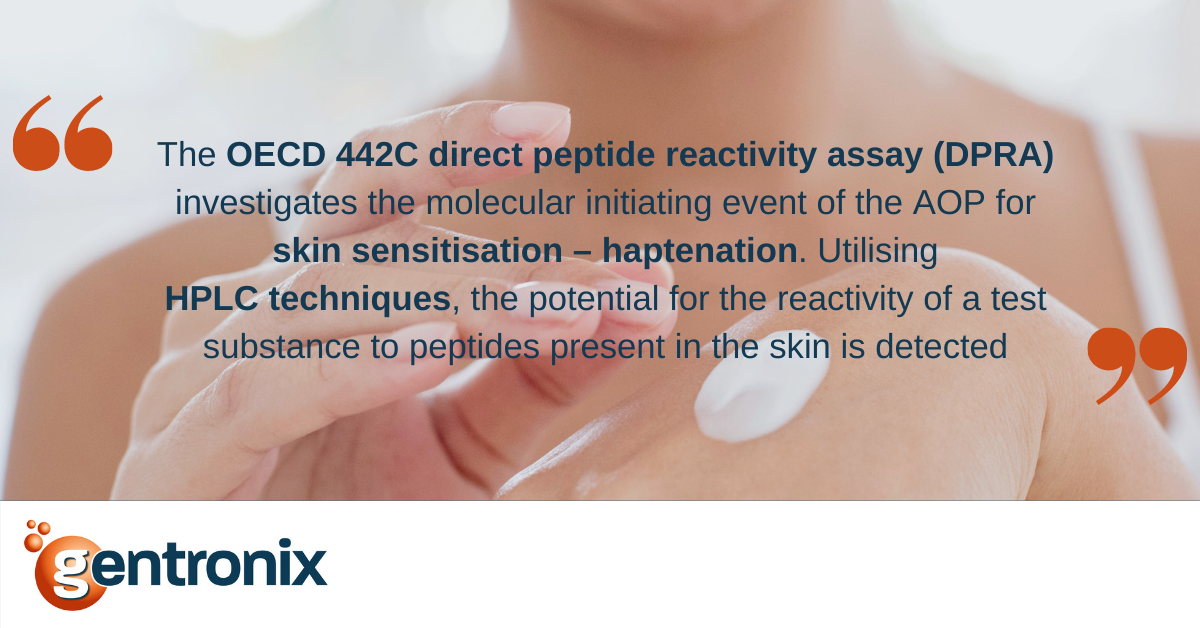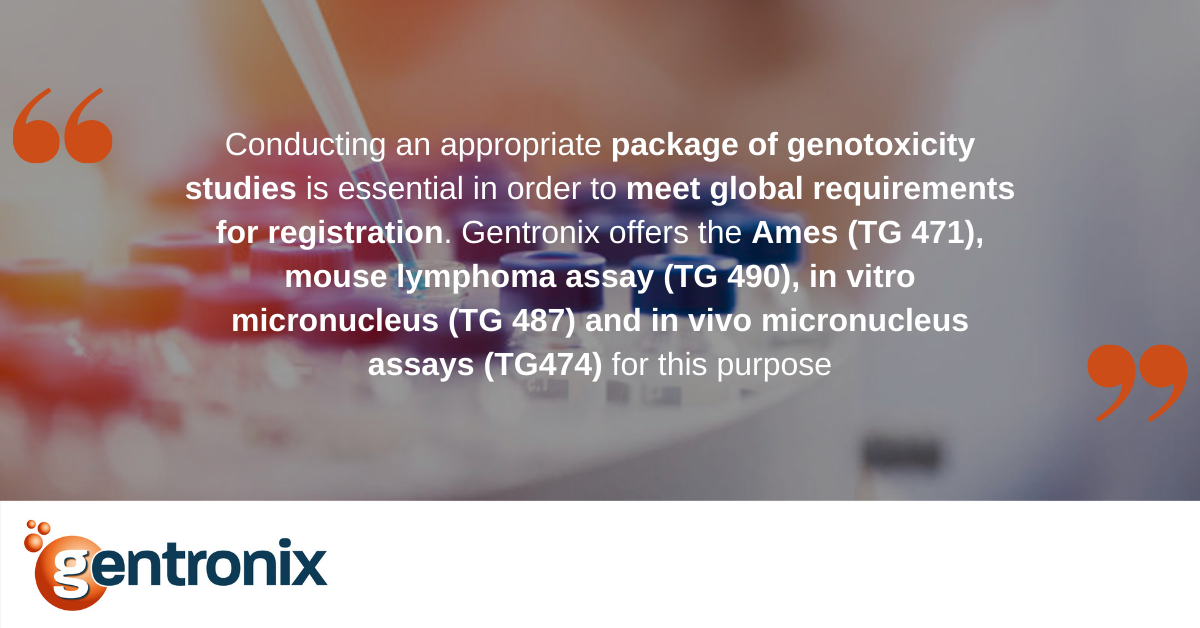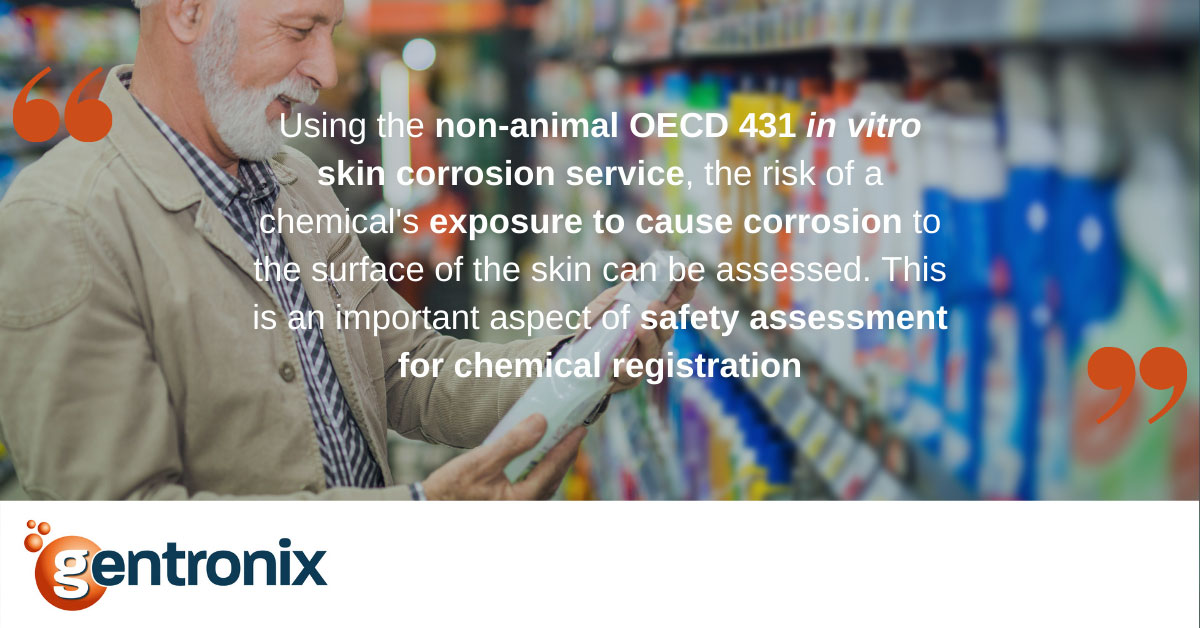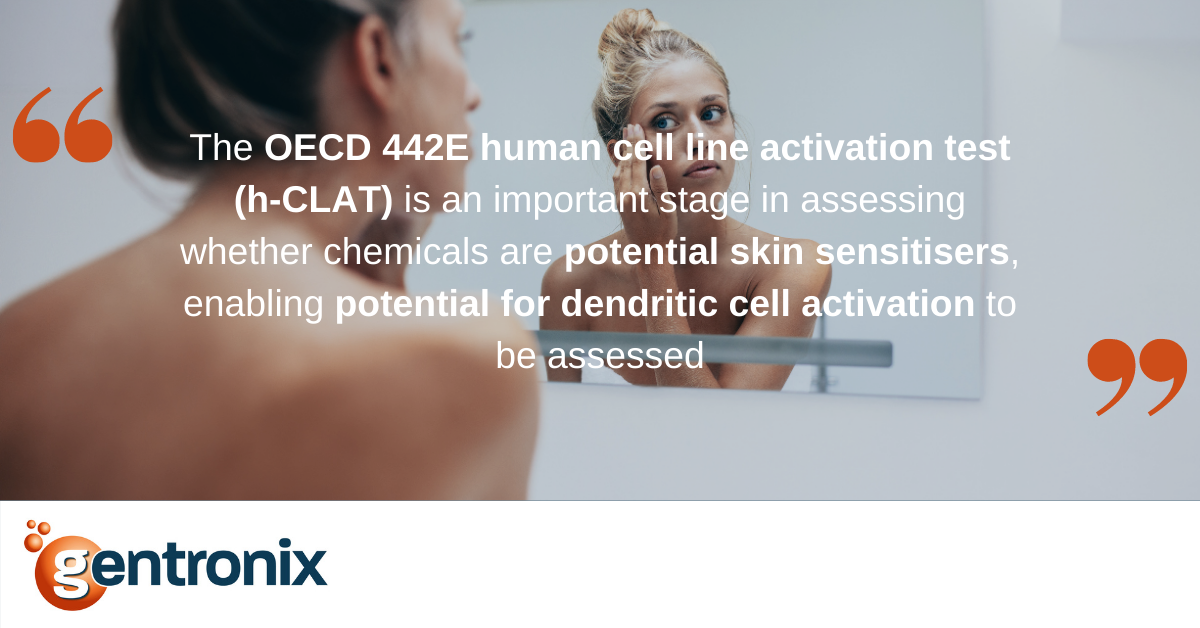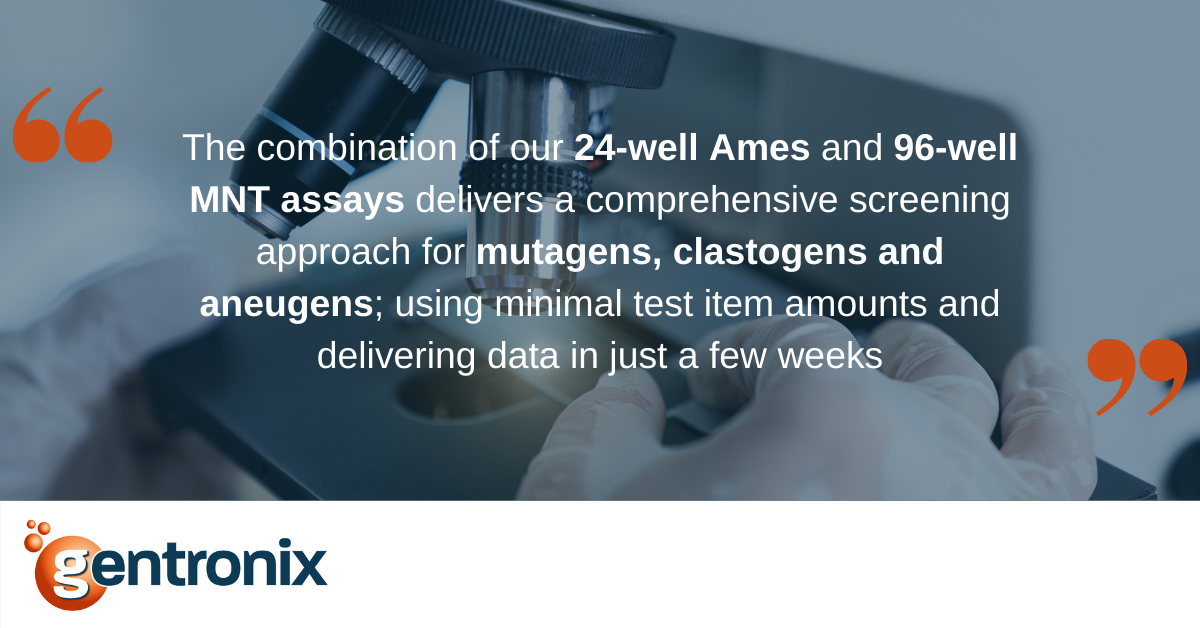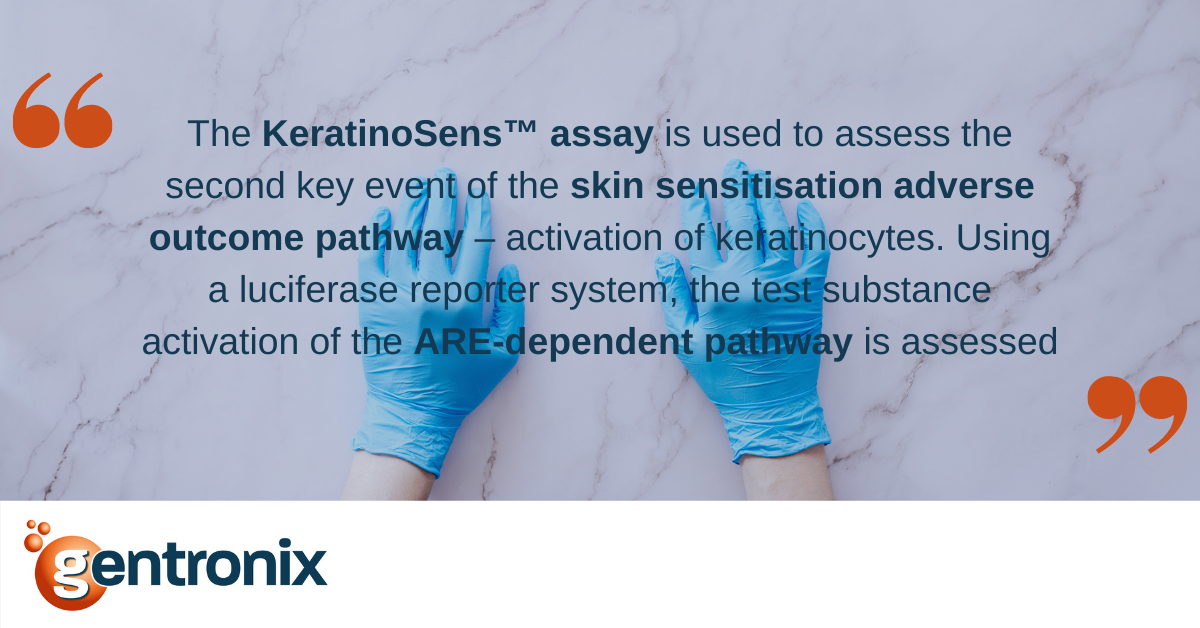Within the skin sensitisation adverse outcome pathway, the first key event is based on the premise that a chemical can become a skin sensitiser via interaction with skin proteins, forming a hapten that is recognised by cells of the immune system and triggers a response.
Testing novel chemicals and formulations for this Molecular Initiating Event (MIE), haptenation, is an essential aspect of skin sensitisation safety testing and risk assessment. Our GLP Direct Peptide Reactivity Assay (DPRA), enables our clients to quickly determine if their chemicals present these challenges, and generate data opposite the MIE stage of the sensitisation AOP.
You can find out more about our DPRA service here: https://gentronix.co.uk/services/skin-sensitisation/direct-peptide-reactivity-assay
Testing discreet chemicals and chemical formulations in the DPRA assay is a key element of the skin sensitisation safety assessment process, enabling those materials and substance with a potential to form haptens to be quickly identified. Our GLP service looks at the covalent binding of both cysteine and lysine peptides, monitoring the depletion of these using HPLC techniques that are consistent with OECD 442C guideline.
Having demonstrated correct sensitisation classification for all of the OECD 442C proficiency chemicals, our expert team has performed numerous GLP studies, developing our experience in formulating and solubilising test substance for DPRA testing. We have strengthened our knowledge in identifying the challenges different vehicles can present in this assay, and the optimal test approaches to mitigate these. Having that experience and expertise in our team enables Gentronix to work with our clients to optimise the study design for the specific nature of each test chemical or product formulation, whilst ensuring studies meet OECD 442C and regulatory requirements.
Use of the DPRA in conjunction with KeratinoSens™ &/or h-CLAT presents a comprehensive assessment of key events in the skin sensitisation allergenicity AOP. Substances demonstrating a significant response in DPRA’s molecular initiating event, which also lead to an activation of keratinocytes (KeratinoSens™) &/or dendritic cells (h-CLAT) have a very high likelihood of presenting a human dermal sensitisation risk. Use of these assay combinations allows Gentronix to support our clients in the chemical regulatory safety and risk assessment landscapes.
